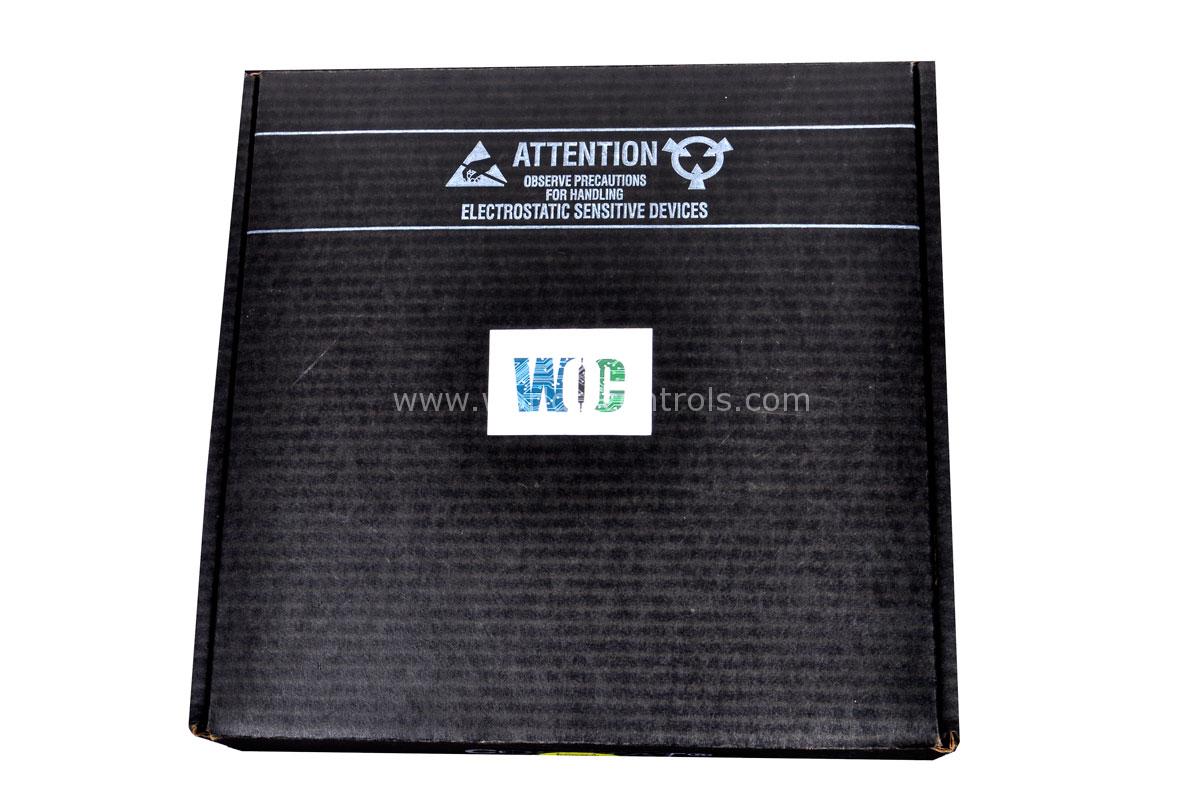SPECIFICATIONS
Part Number: 5461-655
Manufacturer: Woodward
Product type: Final Driver Module
Repair: 3-7 Day
Availability: In Stock
Country of Manufacture: United States (USA)
Functional Description
5461-655 is a final driver module developed by Woodward. As a final driver module, it serves a crucial role in controlling and driving the final output stages of various systems or equipment. This module is designed to provide precise and reliable control signals to actuator devices, such as valves, motors, or other final control elements. The module incorporates advanced technology and features to ensure efficient and accurate control. It is specifically engineered to meet the demanding requirements of industrial applications. This product has been discontinued by Manufacture from the production. Contact WOC for the availability of this module.
Featues
- GCB Condition Communication: The module receives the Generator Circuit Breaker (GCB) condition directly through discrete inputs. The status of the GCB is communicated to the module via discrete input [DI 08] (terminal 74) and discrete input [DI 11] (terminal 77). This allows the module to monitor the status of the GCB and respond accordingly.
- Automatic Generator Load Ramp-Up: When the GCB is closed and the signal indicating the unloading generator is deactivated, and automatically ramps up the generator's load to match the load related to the other generator. This functionality ensures synchronized and efficient load sharing between multiple generators.
- LS Module Self-Test: The module performs a self-test for the Load Share (LS) module, and if successful, it indicates it through relay [R 01] (terminal 41/42). This self-test verifies the proper functioning and readiness of the LS module.
- Missing CAN Load Share Bus Member Alarm: In the event that a member of the CAN load share bus is missing, the module triggers an alarm and internally switches to droop mode. This alarm is indicated through relay [R 02] (terminal 43/46). Droop mode refers to a control mode in which the generator output is reduced to maintain system stability.
- Load Share Monitoring Relay Alarm: The module monitors the load share in the system, and if an abnormal condition is detected, it triggers an alarm. This alarm is indicated through relay [R 03] (terminal 44/46), alerting the operator to the load share monitoring issue.
- GCB Feedback Monitoring Alarm: The module monitors the feedback signals from the GCB, and if any irregularities or faults are detected, it triggers an alarm. In response to this alarm, the unit switches internally to droop mode. The alarm is indicated through relay [R 04] (terminal 45/46).
- Tie-Breaker Feedback Monitoring: The module verifies the acceptability of the tie-breaker feedback. If the feedback is not acceptable or within the desired parameters, the unit switches internally to droop mode. This functionality is indicated through relay [R 08] (terminal 53/54).
TMR System Power-up
If the defined or expected result is not achieved at any point during this procedure, begin system troubleshooting.
- Make sure the entire MicroNet TMR control system is installed.
- Turn on one power supply and ensure that the green LED on the power supply is the only one that is lit.
- Turn on the second power supply and ensure that the green LED on the power supply is the only one that is lit.
- Ensure that all of the Kernel Power Supply's red fault LEDs are turned off. 2. If the system is configured with the CPU 040, skip step 5 and proceed to step #6. If the CPU 5200 is used in the TMR system, skip step 5 and proceed to step 6.
- CPU 040: Toggle two of the CPU's RESET switches up briefly before returning them to their normal down position. Toggle the remaining CPU RESET switch to the up position, then back to the down position. The system will now perform off-line diagnostic testing, which may take several minutes. When all CPUs have synchronized and completed their diagnostic tests, there should be no red LEDs on the CPU modules or I/O modules, and the control will begin running the application program.
- CPU 5200: Wait until the CPUs' off-line diagnostics are complete and the CPUs are visible in AppManager. If the CPUs were running when they were turned off, they will restart the application that was running when they were turned off. If no Applications were running, in AppManager, select an Application on each CPU and click Start. The CPUs will execute the chosen application, synchronize, and finish their diagnostic tests. There should be no red LEDs on the CPU or I/O modules, and the application program should be running on the control. The Green SYSCON and RUN LEDs should be illuminated, while the Yellow STBY LED should be turned off.
World of Controls has the most comprehensive selection of GE and Woodward components. Our professionals are available to help you with your requirements at any time. If you require any additional information, please contact WOC immediately.
Frequently Asked Questions
What is 5461-655?
It is a final driver module developed by Woodward.
How is the GCB condition communicated to the module?
The GCB condition is communicated directly to the module via discrete input DI 08 terminal 74 and discrete input DI 11 terminal 77.
What happens when the GCB is closed and the unloading generator signal is deactivated?
When the GCB is closed and the unloading generator signal is deactivated, the unit automatically ramps up the generator to a load related to the other generator.
What does a successful LS module self-test indicate?
A successful LS module self-test is indicated by relay R 01 terminal 41/42 being active.
